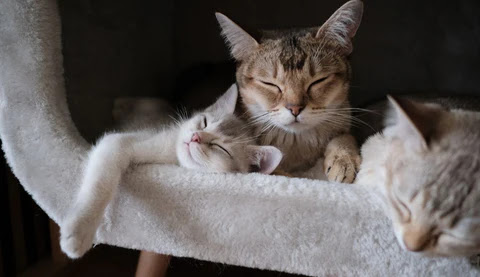How to Make the Most of Your Pet Training Sessions?
Pet Training Tips
Training a pet can be a challenging task, but with the right approach and techniques, it can also be a rewarding experience for both you and your furry friend. Whether you are a new pet owner or have had pets for many years, it’s important to understand the best practices for making the most of your pet training sessions. In this article, we will explore some helpful tips and effective methods to help you train your pet successfully.
Positive Reinforcement Techniques
Positive reinforcement is a powerful training technique that focuses on rewarding desired behaviors rather than punishing or reprimanding unwanted behaviors. This approach not only encourages your pet to repeat the behaviors you want but also strengthens the bond between you and your pet.
Here are some effective positive reinforcement techniques:
- Use treats: Giving your pet treats as rewards for good behaviors can be highly motivating. Make sure to choose small, tasty treats that your pet loves and give them immediately after your pet performs the desired behavior.
- Verbal praise: Don’t underestimate the power of your words! Verbal praise, such as saying “Good boy/girl!” or “Well done!” in an enthusiastic tone, can make your pet feel loved and appreciated.
- Physical affection: Pets thrive on physical touch and affection. Show your pet love and affection by petting, cuddling, or gently scratching their favorite spot as a reward for a job well done.
- Clicker training: Clicker training is a method that uses a clicker, a small handheld device that makes a distinctive clicking sound when pressed. The clicker is paired with a reward, and the sound of the clicker serves as a signal to your pet that they have done something right.
Effective Training Methods
When it comes to training your pet, there are various methods and approaches you can take. However, not all methods may be suitable for every pet, so it’s essential to choose the ones that work best for your furry friend. Here are some effective training methods to consider:
- Target training: Target training involves teaching your pet to touch a particular object, such as a target stick, with their nose or paw. This method can be useful for teaching basic commands and tricks.
- Clicker training: As mentioned earlier, clicker training is a popular and effective method that relies on positive reinforcement. It can be used for various training purposes, from basic obedience commands to more advanced tricks.
- Back-chaining: Back-chaining involves teaching your pet a behavior in reverse order. For example, if you want to teach your dog to fetch a ball and drop it in a basket, you would first teach them to drop the ball in the basket, then to pick up the ball and drop it in the basket, and finally to fetch the ball and drop it in the basket.
- Behavior shaping: Behavior shaping involves reinforcing small steps or approximations toward the desired behavior. This method is particularly useful when teaching complex behaviors that cannot be easily accomplished in one step.
Pet Training Sessions
Now that you have learned some valuable training tips and techniques, let’s talk about how to make the most of your pet training sessions. Consistency, patience, and a positive attitude are key to successful pet training. Here are some strategies to help you get the most out of your training sessions:
- Establish a routine: Set a regular training schedule that suits both you and your pet. Consistency is crucial when it comes to training, so try to have shorter training sessions each day rather than longer sessions once in a while.
- Choose a quiet and distraction-free environment: Find a quiet space where you and your pet can focus without any distractions. This will help ensure that your pet can concentrate on the training exercises.
- Keep sessions short and fun: Dogs and cats have a relatively short attention span, so it’s essential to keep training sessions short and engaging. Aim for sessions that last no longer than 10-15 minutes and make them as enjoyable as possible for your pet.
- Break down tasks into smaller steps: If you are teaching your pet a complex behavior, break it down into smaller, more manageable steps. This will make it easier for your pet to understand and progress through the training process.
- End on a positive note: Always try to end each training session on a positive note, even if you didn’t achieve all your training goals. Finish with an easy command or trick that your pet knows well and reward them for their efforts.
Conclusion
Training your pet is an ongoing process that requires time, patience, and dedication. By applying positive reinforcement techniques, choosing effective training methods, and making the most of your training sessions, you can set your pet up for success and strengthen the bond between you and your furry friend. Remember to keep the tone positive, be consistent with your training efforts, and celebrate every small victory along the way. Happy training!













